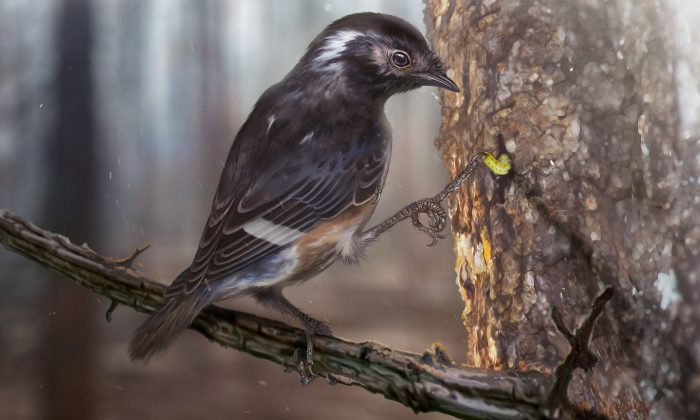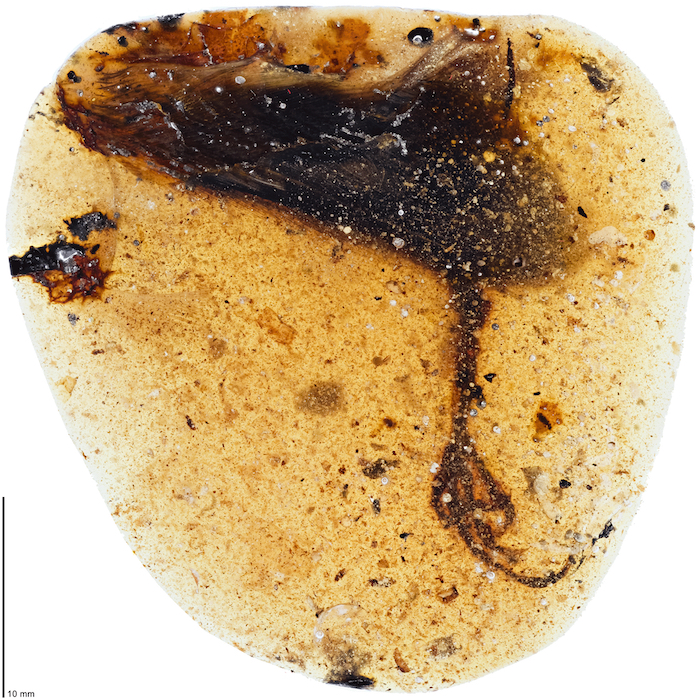Amber is an excellent preserver of ancient life. Maybe the best, really.
As long as the specimen is small enough to be covered, this tree sap essentially hardens and makes a jewel of the dead creature. We've already seen how this can turn fossils of a prehistoric snail or dinosaur feathers into a magical keepsake.
Now get ready to meet a bird unlike any you've seen before. According to a new study, one 99-million-year-old fossil in amber is of a new species called Elektorornis chenguangi (say ee-LEK-tor-or-niss shen GOO-ahn-gee). And it was not a big bird as much as a big toe bird.
The sparrow with the arrow toe

Yoink! E. chenguangi uses its super long toe to snag a tasty grub in this artist's interpretation of its life 99 million years ago. (Zhongda Zhang)
Elektorornis chenguangi — "Elektorornis" means "amber bird" — was a little smaller than a modern sparrow. The fossil only contains the remains of the lower half of its body, but that's all experts really need to say that it was unlike any other bird we've ever known. One of the middle toes on its four-toed foot is much longer than the others. In fact, it's 41 percent longer than the others.
Paleontoligists say that even after comparing the bird with 62 other bird species, they can find a single species with a long toe like E. chenguangi had.
Stop picking at it!
In addition to looking kind of scared, aye-ayes also have very long middle toes. (Zhongda Zhang)
So what does this all mean? For starters, prehistoric birds were probably a lot more varied than we might think, even during this ancient age of reptiles. Between tiny birds and the dinosaurs themselves, the Cretaceous Period is looking fluffier by the day!
But in this particular case, everything comes back to that toe. What was it for? Even if there's no other bird quite like E. chenguangi, a long toe is something that a few species make use of. The authors of the study — researchers Lida Xing and Jingmai O'Connor – compared the bird to the aye-aye, a primate from Madagascar. Aye-ayes use their long middle toes to get at hard-to-reach food within tree bark. No one is saying that they're related, but perhaps their behaviour was similar?
Hopefully they find more fossils of this special bird to get a more complete picture of their lives!
 The specimen in this chunk of amber is unlike any bird — alive or ancient. (Lida Xing/China University of Geosciences)
The specimen in this chunk of amber is unlike any bird — alive or ancient. (Lida Xing/China University of Geosciences)










Cool